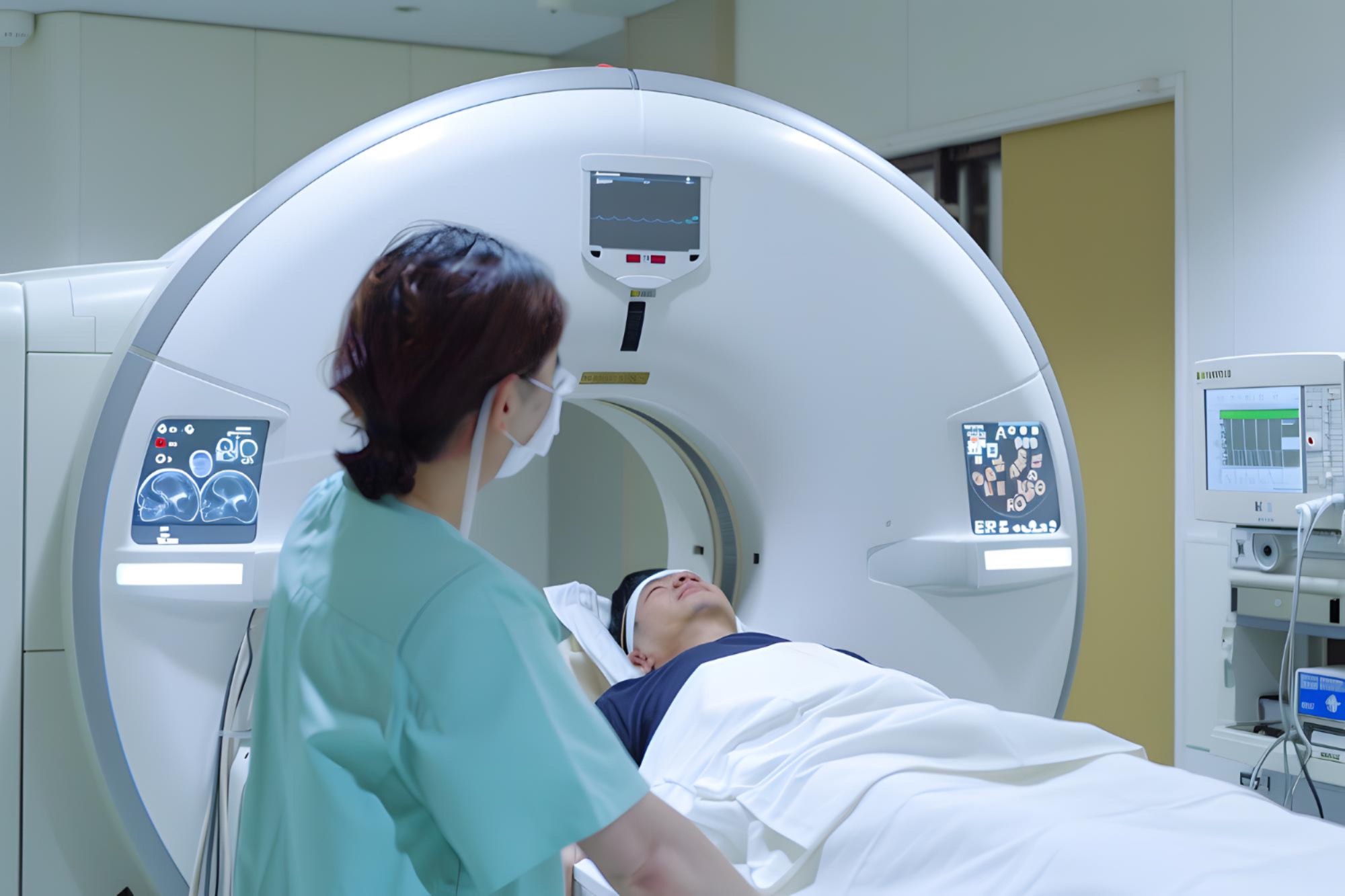Recognising Brain Tumour Symptoms & Getting Specialised Treatment
Article by: Created by: Dr. Lee Chun Lin, Consultant Neurosurgeon
10 July 2025
Every year, World Brain Tumour Day is observed on June 8th to serve as a reminder of the silent yet life-altering impact of brain tumours, in honour of everyone who has been affected by brain tumour and its related ailments.
Brain tumours often develop unnoticed, but their effects can be devastating. Whether benign or malignant, they can disrupt critical brain functions, alter personalities and threaten survival. The first step in fighting back? Awareness.
Together with Dr. Lee Chun Lin, Consultant Neurosurgeon at Sunway Medical Centre Penang, this blog was written to break down what brain tumours are, their warning signs, different types and modern treatments in Malaysia to allow you to move from awareness to action.

Understanding Brain Tumours & How To Identify Them
What Are Brain Tumours?
Brain tumours are abnormal growths of cells that develop in or around the brain or central nervous system (CNS). Classified as a type of cancer, brain tumours are an uncommon cancer condition in Malaysia, only making up 3,679 known cases over a 5-year timespan, compared to the 21,899 colorectal cancer cases in the same time period.
These tumours can vary widely in type, behaviour and severity. Broadly speaking, they fall into two main categories: primary and secondary.
Primary brain tumours originate from the brain's own tissues. They can be benign (non-cancerous) or malignant (cancerous). Common types include gliomas, which arise from the brain’s supportive glial cells and meningiomas, which develop in the membranes covering the brain and spinal cord. Though benign tumours may not spread, they can still cause significant problems by pressing on sensitive areas of the brain.
Secondary brain tumours, also known as metastatic brain tumours, do not start in the brain. Instead, they spread from cancers elsewhere in the body — such as the lungs, breasts, kidneys or skin — and take root in brain tissue. These are more common than primary brain tumours and are often a sign of advanced cancer.
Regardless of their origin, brain tumours can be dangerous. As they grow, they may compress or invade healthy brain tissue, disrupting normal brain function. This can lead to a wide range of symptoms — from headaches and seizures to changes in vision, speech or personality. If left untreated, brain tumours can cause permanent neurological damage, disability or even death.


Types of Brain Tumours
Not all brain tumours behave the same way. Understanding the type of tumour is essential for determining the right treatment plan in Malaysia. Below are some of the more common types of brain tumours:
|
Oligodendroglioma |
A rare type of glioma that begins in oligodendrocytes — cells that produce the protective covering (myelin) for nerve fibres in the brain. These tumours often grow slowly but can become more aggressive over time. |
|
Meningioma |
The most common primary brain tumour, meningiomas grow from the meninges — the layers of tissue that surround the brain and spinal cord. While typically benign, their size and location can still cause serious symptoms. |
|
Papillary Tumours of the Pineal Region |
These are rare tumours that arise near the pineal gland, deep in the centre of the brain. They may cause headaches, vision problems or hormonal imbalances due to their location. |
|
Medulloblastoma |
A fast-growing, malignant tumour that forms in the cerebellum (which controls coordination and balance). Most commonly found in children, this tumour can spread to other parts of the brain and spinal cord. |
|
Ependymoma |
Originating from ependymal cells lining the brain’s ventricles or central spinal canal, ependymomas can block the flow of cerebrospinal fluid, leading to increased pressure in the brain. |
|
Schwannoma |
A benign tumour that grows from Schwann cells, which form the protective sheath around nerves. Vestibular schwannomas (acoustic neuromas), for example, can affect hearing and balance when located near the auditory nerve. |
|
Brainstem Glioma |
A malignant tumour located in the brainstem — the area that controls vital functions like breathing and heart rate. Most common in children, these tumours are difficult to remove surgically due to their location. |
|
Pituitary Adenoma |
A tumour arising from the pituitary gland, which controls hormone production. These tumours can disrupt hormonal balance, cause vision changes (by pressing on the optic nerve) and affect metabolism or fertility. |
|
Craniopharyngioma |
A rare, typically benign cancerous tumour that develops near the pituitary gland from leftover embryonic tissue. It can impact hormone levels and vision, particularly in children and adolescents. |
|
Optic Glioma |
A glioma that affects the optic nerves, which connect the eyes to the brain. Most common in children, this tumour may cause vision loss or problems with eye movement. |
|
Astrocytoma |
A type of glioma that originates from astrocytes — star-shaped glial cells that support and nourish neurons. These tumours can vary in severity, from low-grade (slow-growing) to high-grade (more aggressive). |
Understanding the specific type of brain tumour is key to choosing the most effective treatment, which brings us to the next point.

Modern Treatments
Treatment options in Malaysia typically depend on the type, size and location of the tumour, as well as the patient’s age and the choice of private hospital or medical centre to receive treatment. Here are some considerations:
|
Surgery |
Surgery is often the first option, especially if the tumour is accessible and operable. The goal of neurosurgery is to remove as much of the tumour as possible without damaging surrounding healthy brain tissue. This helps to relieve pressure on the brain or even cure the condition. |
|
Radiation Therapy |
This treatment uses high-energy beams (X-rays or protons) to destroy cancer cells or shrink tumours. It is commonly used when surgery isn't possible or to eliminate remaining tumour cells after neurosurgery. Modern techniques like stereotactic radiosurgery (SRS) allow for precise targeting. |
|
Chemotherapy |
Chemotherapy uses powerful drugs to kill rapidly dividing cancer cells throughout the body. It may be given orally or through injection and is often combined with other treatments, particularly for malignant or aggressive tumours. |
|
Targeted Therapy |
Unlike chemotherapy, targeted therapy focuses on specific genetic or molecular markers found in certain tumours. These drugs prevent cancerous tumour growth, helping to control the disease with fewer side effects. Targeted therapies are tailored to the individual’s tumour profile. |
|
Immunotherapy |
This emerging treatment harnesses the body’s own immune system to recognise and attack cancer cells. Though still under study, immunotherapy is showing promise—particularly for tumours that don’t respond well to standard therapies. |
Thanks to breakthroughs in precision medicine and immunotherapy, survival rates and quality of life are improving—even for patients with aggressive brain tumours. Many of these treatment options are available at Sunway Medical Centre Penang, as well as many of our other specialist centres.

How You Can Help
You do not need to be a doctor to make a difference. Every small action counts and your voice, empathy and initiative can make a life-saving difference. Here’s how you can get involved:
Spread Awareness
Many people dismiss early symptoms of brain tumours—like persistent headaches or vision changes—as minor or unrelated. The fact is, if more than one of these symptoms persists, it may be necessary to visit a private hospital or medical centre. By simply sharing this article, you help educate your community and break the silence surrounding brain health. The more we talk about it, the more people know what to look out for.
Encourage Early Screening
If you know someone who’s been struggling with unusual symptoms—like sudden memory lapses, unexplained seizures or changes in personality—gently encourage them to consult a healthcare professional. Early detection dramatically improves treatment options and outcomes. Sometimes, a supportive nudge is all it takes to help someone take that first step.
Support Research and Patient Care
Funding for brain tumour research remains limited compared to other cancers. Consider donating to organisations and charities that support brain tumour research, patient care and family support services. Even small contributions help fund better diagnostics, safer treatments and hope for a cure.
Be an Ally to Patients and Families
If someone in your circle is living with a brain tumour diagnosis, offer them emotional and practical support. Whether it’s helping with transportation to appointments, running errands or just being there to listen—your presence can ease their burden more than you realise.
Together, we can make brain health a priority—and potentially save lives.

Your Brain Deserves Attention—Today and Every Day
When it comes to your health, neither should you. This World Brain Tumour Day, take a moment to prioritise awareness—not just for yourself, but for your loved ones, too. With today's treatment options and availability of medical care, treatment options like chemotherapy, immunotherapy and neurosurgery are all open to those with brain tumours.
Know the signs. Share the knowledge. Encourage early check-ups. Remember, it is never too late to start taking your health seriously, especially when it concerns your brain health.
At Sunway Medical Centre Penang, we are here to support you with advanced diagnostic tools, experienced specialists in neurosurgery and oncology and comprehensive brain care services. If you or someone you know is experiencing persistent symptoms, don’t delay—reach out to us via our contact numbers, or download the Sunway Medical Penang App for express appointment booking.
 Back
Back





























